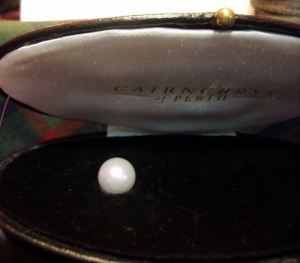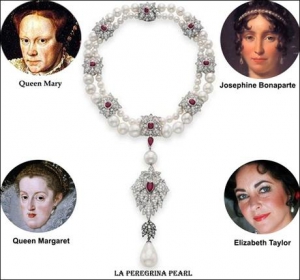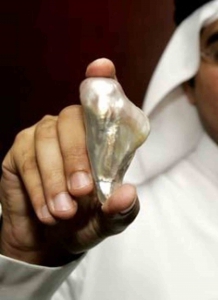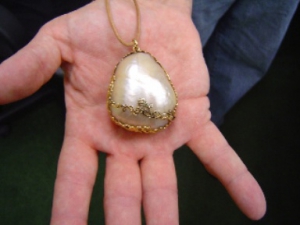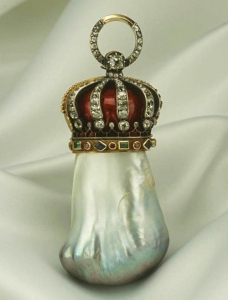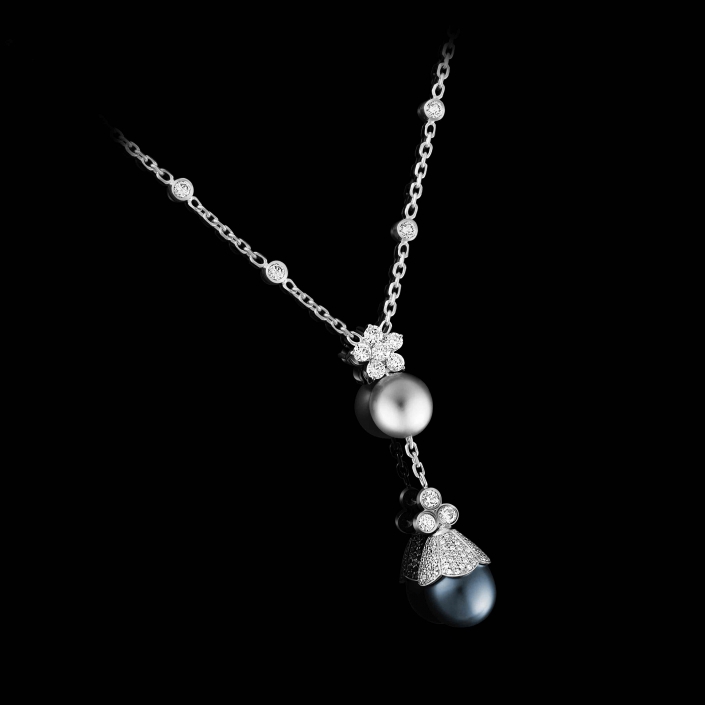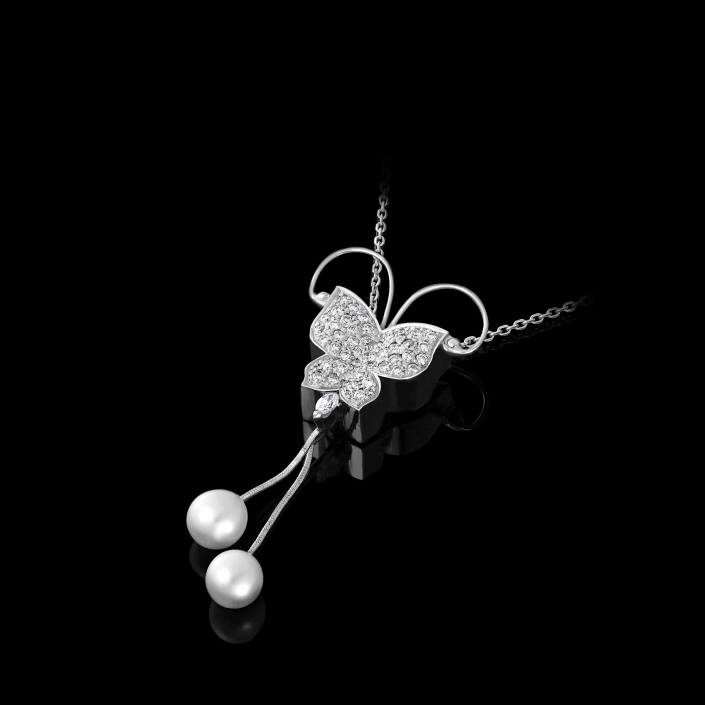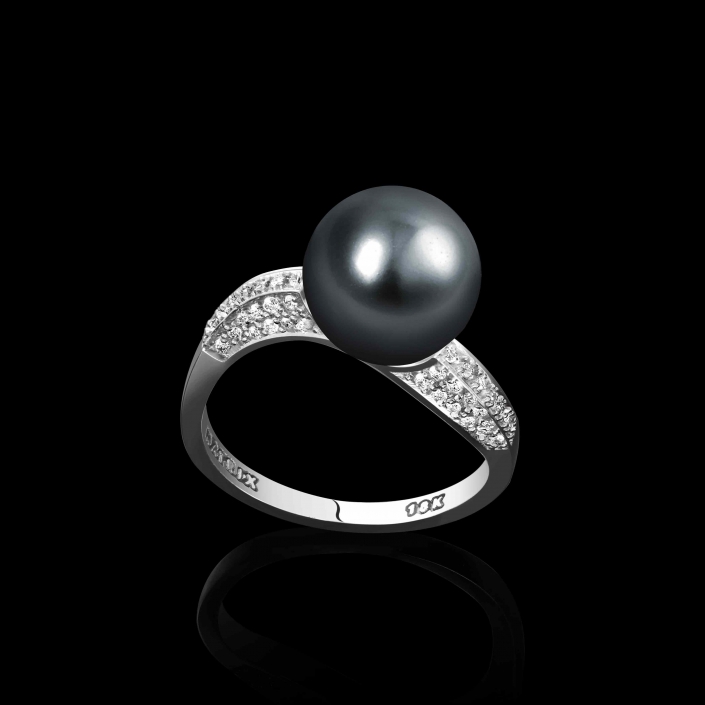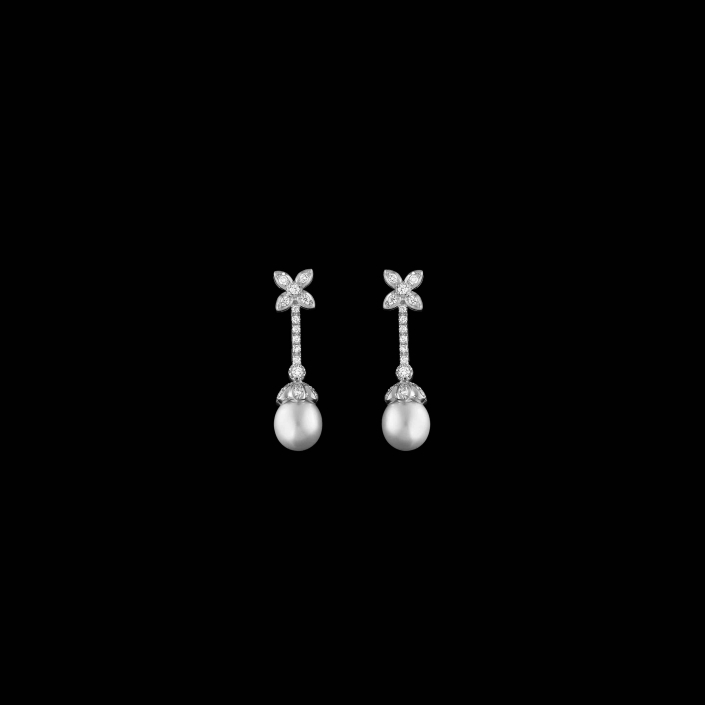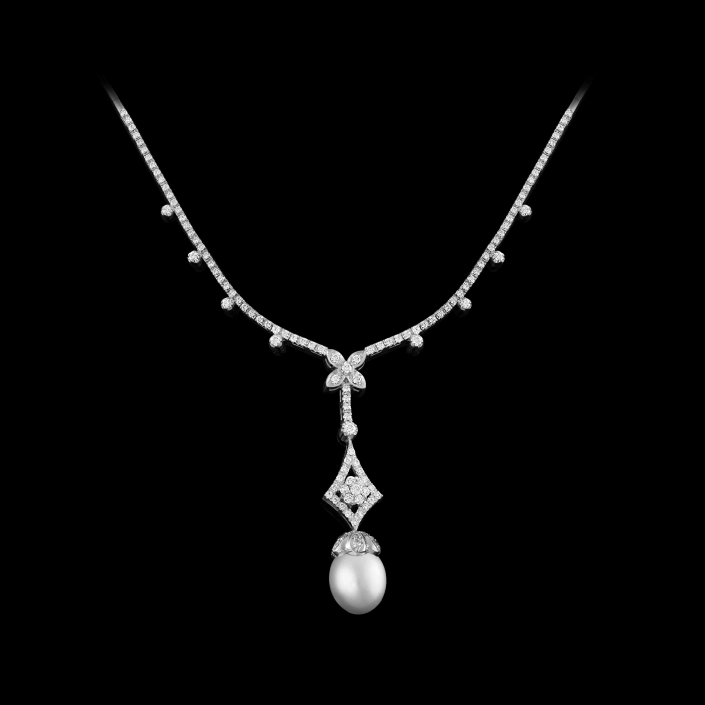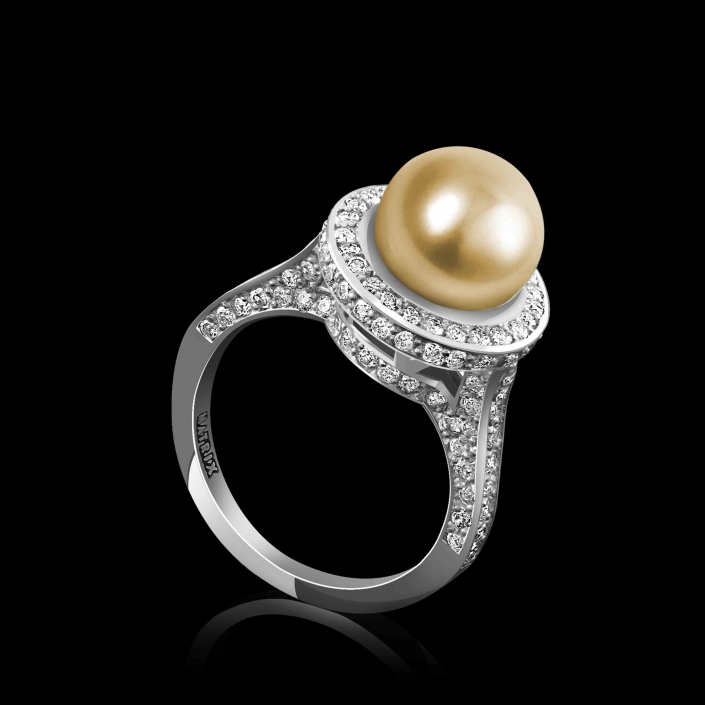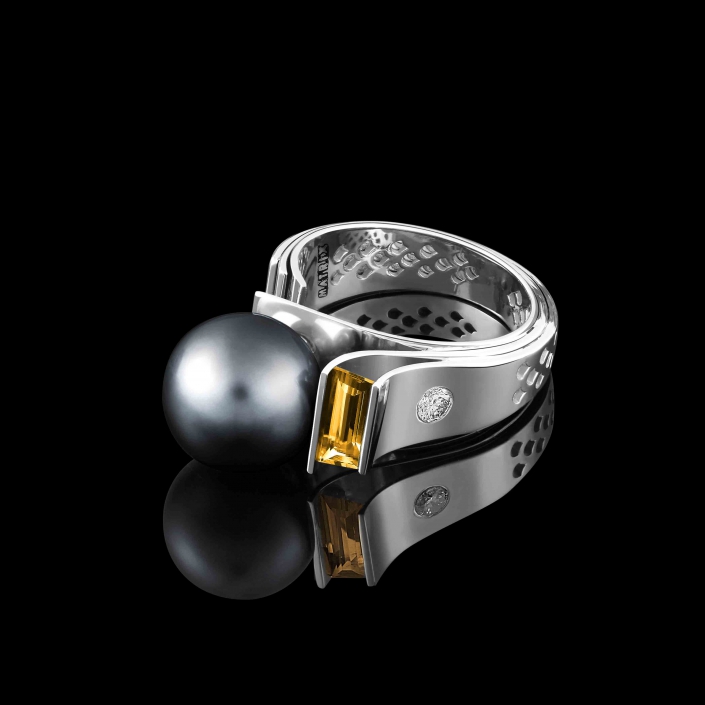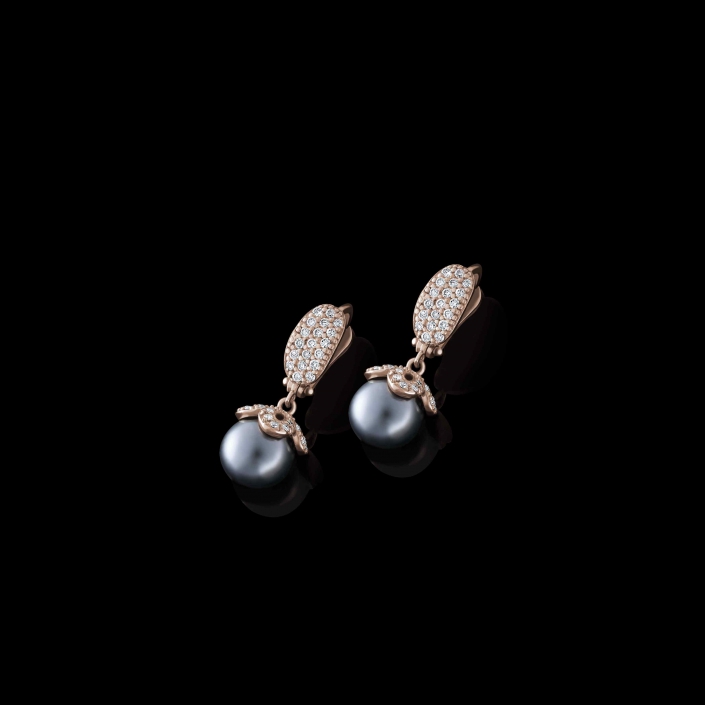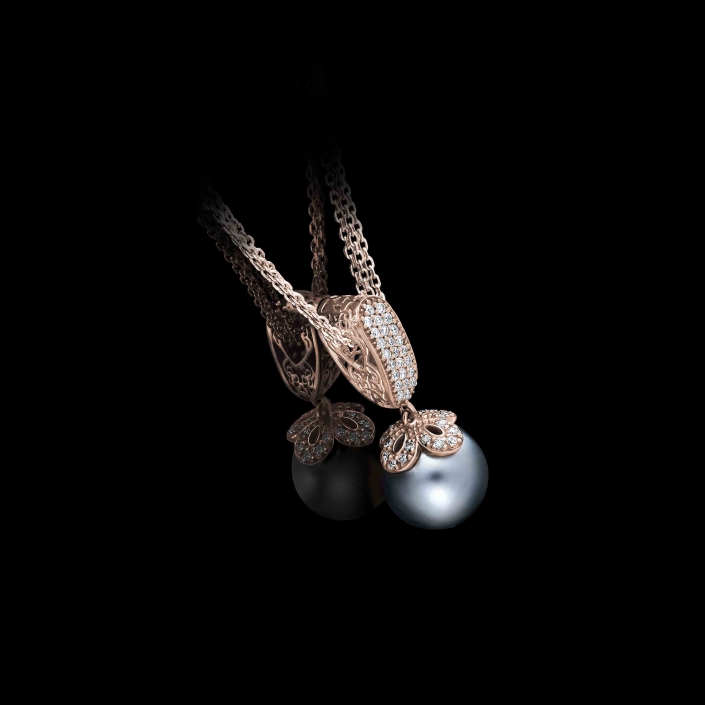Pearl
A pearl is a hard glistening object produced within the soft tissue (specifically the mantle) of a living shelled mollusk or another animal, such as a conulariid. Just like the shell of a mollusk, a pearl is composed of calcium carbonate (mainly aragonite or a mixture of aragonite and calcite) in minute crystalline form, which has been deposited in concentric layers. The ideal pearl is perfectly round and smooth, but many other shapes, known as baroque pearls, can occur. The finest quality natural pearls have been highly valued as gemstones and objects of beauty for many centuries. Because of this, pearl has become a metaphor for something rare, fine, admirable and valuable.
The value of the pearls in jewelry is determined by a combination of the luster, color, size, lack of surface flaw and symmetry that are appropriate for the type of pearl under consideration. Among those attributes, luster is the most important differentiator of pearl quality according to jewelers.
All factors being equal, however, the larger the pearl the more valuable it is. Large, perfectly round pearls are rare and highly valued. Teardrop-shaped pearls are often used in pendants.
Shapes:
Pearls come in eight basic shapes: round, semi-round, button, drop, pear, oval, baroque, circled and double bouldered. Perfectly round pearls are the rarest and most valuable shape. Semi-rounds are also used in necklaces or in pieces where the shape of the pearl can be disguised to look like it is a perfectly round pearl. Button pearls are like a slightly flattened round pearl and can also make a necklace, but are more often used in single pendants or earrings where the back half of the pearl is covered, making it look like a larger, rounder pearl.
Drop and pear shaped pearls are sometimes referred to as teardrop pearls and are most often seen in earrings, pendants, or as a center pearl in a necklace. Baroque pearls have a different appeal; they are often highly irregular with unique and interesting shapes. They are also commonly seen in necklaces. Circled pearls are characterized by concentric ridges, or rings, around the body of the pearl.
Famous Pearls
The following ten pearls each contain its own unique story… a rich history with characters of great wealth and nobility:
The Pearl of Allah:
Also known as the Pearl of Lao Tzu, this interesting specimen is believed to be the largest natural pearl in existence. The pearl was found in the Philippines and given to Wilburn Cobb (an American) when he saved the life of the tribal chief’s son. Weighing in at more than 14 pounds and almost 10 inches across, it’s an enormous creation of the sea.
The Abernathy Pearl:
The Abernathy Pearl is a freshwater pearl that was found in Scotland’s River Tay in 1967. It is named after the diver who found it, Bill Abernathy. This pearl is one of very few that had been graded as “perfect.”
Being found in Scotland makes it especially unusual. There have never been many pearls produced in those waters, but since the Industrial Revolution, the river has become extremely polluted. Pearls typically need pristine water to form, so that makes the Abernathy even more unique. It was displayed in a jewelry store in Cairncross for almost 30 years and then was sold in 1992. Nobody knows who currently owns the Abernathy Pearl.
La Peregrina Pearl:
his beautiful pearl has a long and storied past. It was discovered near Panama in the 1500s, and then given to King Phillip II of Spain, who gave it to his wife, Queen Mary. Its name, La Peregrina, translates to The Wanderer. This pear-shaped pearl is huge, weighing almost 56 karats. After Queen Mary died, the pearl passed through the hands of other queens of France and Austria, and then to Napoleon Bonaparte.
In more recent times, Richard Burton bought it for Elizabeth Taylor as a Valentine’s Day gift. She loved it and wore it on a unique necklace with other gems such as diamonds and rubies, kick-starting a trend of pearl jewelry in modern times. It has been sold for nearly $11 million at a more recent auction. This pearl has been owned by some of the most powerful and fashionable women throughout history, and will surely continue to be one of the most treasured pieces of jewelry in the world for centuries to come.
The Arco Valley Pearl:
The second largest natural pearl ever discovered, the Arco Valley Pearl is reported to have once been owned by the famed explorer Marco Polo, who was given it by the Mongolian emperor Khubilai Khan. It’s the largest natural pearl outside of a museum in the world today.
The Imperial Hong Kong Pearl:
A baroque pearl nearly the size of a bird’s egg, the Imperial Hong Kong Pearl earned its name through ownership by Chinese royalty. An interesting teardrop shape, this pearl is known for its amazing luster and deep coloration.
The Big Pink Pearl
This pearl was discovered off the coast of California, the Big Pink Pearl was produced by an abalone. The diver who discovered this treasure still owns the pearl despite numerous offers to buy it. In 1991, it was valued at $4.7 million.
The Gogibus Pearl:
The Gogibus Pearl has a long and mysterious past. Discovered by a Spanish merchant named Gogibus, the pearl was sold to King Philip IV. The pearl’s whereabouts are currently unknown although every few years, the long lost Gogibus Pearl is rumored to be seen in a private collection in various parts of the world.
Jomon Pearl:
At one time, the 5,000-year-old Jamun Pearl was believed to be the oldest known pearl in existence. Older pearls have since been found in the Arabian Peninsula, but the Jomon Pearl continues to be one of the most famous pearls in the world and is a national treasure in its native Japan.
The Hope Pearl:
Regarded as the largest saltwater natural pearl ever discovered, the Hope Pearl is an impressive specimen. It measures about two inches by four inches and weighs almost four ounces. The pearl ranges from a greenish gold color at the bottom to a pure white at the top. This gem is in the permanent collection of the British Museum of Natural History, where any visitor to London can admire it. It also led to the popularity of baroque pearl jewelry. Henry Philip Hope once owned this pearl and the Hope Diamond, at the same time.




